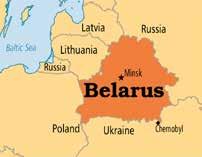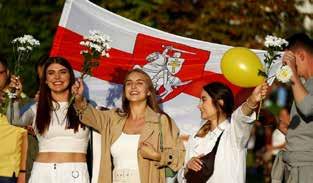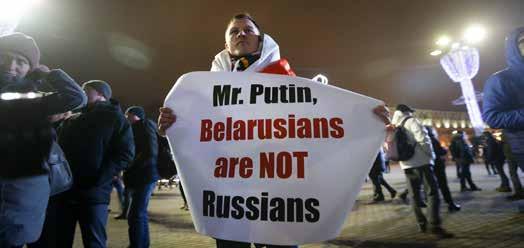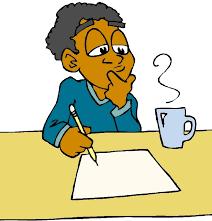
3 minute read
Belarus - Now what?
Revolution or Evolution
OK, let us get the history lesson over and done with. Belarus is one of the oldest ‘countries’ in Europe. However, its lands have been part of several different ‘real’ countries in the likes of Poland, Lithuania, Kievan Rus, Russian empire and more. It was among the hardest hit countries during the German invasion in 1941.
Advertisement

In essence, as everything eastern Europe, we have a rather big territory inhabited by several different nationalities and with borders which have moved around dramatically during the last 500 years.
All of that has caused the usual upheaval in defining a country – just like Ukraine. However, with the dissolution of the Soviet state in 1991, Belarus declared its independence. 1994 saw the adaption of the first constitution.
Belarus is a landlocked country and is dependent on its bigger sibling Russia for trade and nearly everything else.
In comes CIS (Commonwealth of Independent States). This is in essence the gathering of the ‘new’ independent eastern European states after the Soviet empire.
There are a few notable members of CIS: Russia, Ukraine and Belarus. These are the typical Russian states, sharing religion (East orthodox), borders, language and so on. And then the typical Muslim states (Ka-
zakhstan, Azerbaijan). The rest are of interest, but not in this context.
So, we have the typical Eastern Europe combined with the oil-rich South. And all of it dominated by Russia (and Mr. Putin).

True enough we see a prominent national realisation in Belarus. Its own language (Belarus) is different from Russian, traditions are different etc. But the reality is that Belarus and Russia probably share more than what divides.
The living standard increased dramatically after the Soviet empire, but has now declined in recent years.
And now here is the problem area: The government is called the last dictatorship, based on its human rights record. Furthermore, the president has been in power since 1994. The constitution has changed to allow President Alexander Lukashenko to be elected again and again.

This, coupled with a serious crackdown on all dissent and a stagnating economy, has fuelled the current demonstrations.
The 2020 elections were claimed to have been rigged and the population now had enough of it all. The protests must be seen as fight for freedom, economic reform and ultimately a more progressive society.
… and that is where the regime is cracking down on all dissent in the most heavy-handed fashion, drawing international condemnation, also from other Eastern European countries.
Russia saw a jump in living standard of 300% when Putin became president. This was an unprecedented increase and created a cult around Putin. Russia came off a low base, but looking at Russia now, we see a ‘normal’ European country with all the usual trimmings of a growing middle class.

Admittedly, the picture has started to crack of late. Sanctions over Crimea are biting and the crackdown on dissent within Russia does not look good in the eyes of the larger population. Russia itself is dependent on its former republics. Ukraine is a transit country for natural gas to Germany, Kazakhstan is the oil capital of Russia (still!), Belarus is the food chamber and so on.
This means Russia has a keen interest in the governments. If they support the conservative Lukashenko, they are on the road to oppression and protests might escalate in Russia itself. If they abandon Lukashenko, they have a chance to create a prosperous state (again). But then the greater Russian population might also like to increase their lot – meaning similar protests. The bigger question is: Can Putin hold it all together by either force (Lukashenko style) or reform (democracy and cooperation). My guess: the protests are too huge to ignore or suppress. Lukashenko is going!







